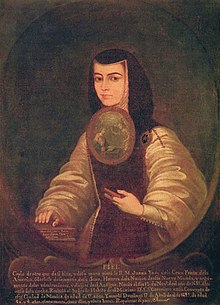Loa (Spanish play)
A loa is a short theatrical piece, a prologue, written to introduce plays of the Spanish Golden Age or Siglo de Oro during the 16th and 17th centuries.
The main purposes for the loa included initially capturing the interest of the audience, pleading for their attention throughout the play, and setting the mood for the rest of the performance.
This Spanish prologue is specifically characterized by praise and laudatory language for various people and places, often the royal court for example, to introduce the full-length play.
Most comedia playwrights (autors) also wrote loas asking the audience for silence to enjoy the afternoon of theatre.
In turn, the Spanish loa was created as a mixture of all of these methods of achieving audience appreciation before the full-length play began.
In Naharro's volume of plays, Propaladia (published in 1517 in Naples), he uses what is called an introito as a prologue spoken by a comic shepherd.
Published in 1604, Rojas' novel, El viaje entrentendio depicts the life of 16th century Spanish actors.
[7] In the same body of work, Rojas Villandrando also praises Lope de Rueda for his writing of the Spanish drama and of the dramatic prologue.
In addition to allegorical autos such as for the mystery of the Eucharist, Calderón de la Barca also wrote secular plays for the royal court that included his Loa for Andrómeda y Perseo (Andromeda and Perseus), which used scenery drawings and machinery effects created by the stage architect Baccio del Bianco.
[2][8] A 1551 Peninsular Corpus Christi play shows the earliest recorded use of the word loa, as we know, regarding a dramatic prologue in Latin America.
Later 18th century "New World" loas contained some of the first references to problems in the Americas navigating class structures with the emergence of a hierarchy based on race that included Criollo, Indios, Mestizos, and more.
Monologues appeared in laudatory prologues or introductions as loas in the plays of Hispanic America and are called elogios dramaticos in Brazil.
González de Eslava’s loas are all in the same monologue style, opening with praise for a Viceroy in Latin America, a saint, or a sacrament.




